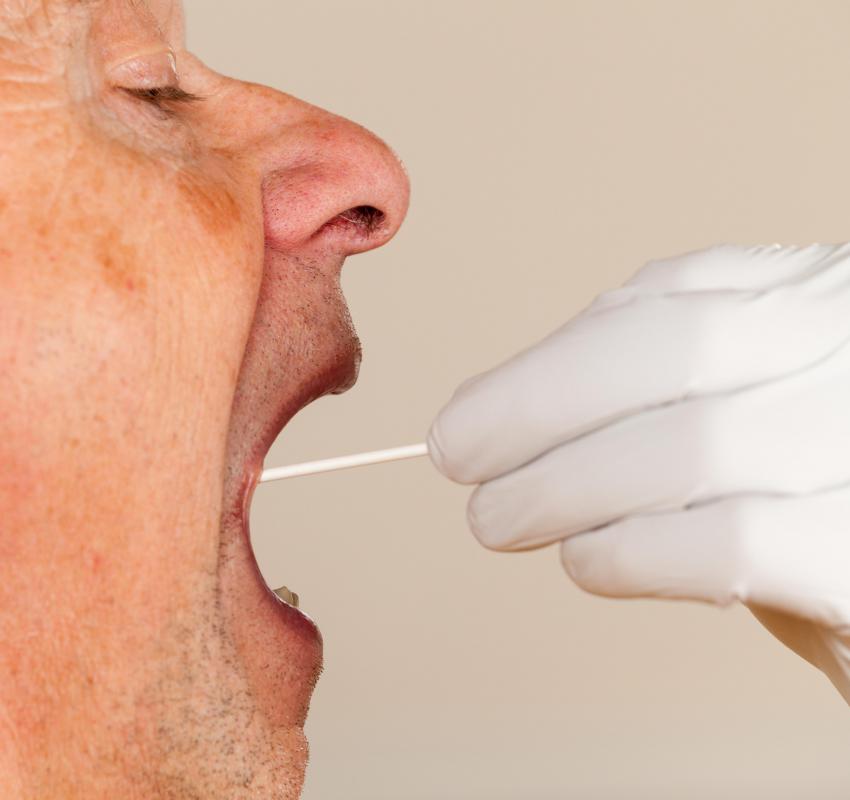At WiseGEEK, we're committed to delivering accurate, trustworthy information. Our expert-authored content is rigorously fact-checked and sourced from credible authorities. Discover how we uphold the highest standards in providing you with reliable knowledge.
What are the Different Methods of Nicotine Detection?
Applications for life or health insurance will often include a nicotine detection test. Gas liquid chromatography can detect nicotine — or its primary metabolite, cotinine — in urine, blood, saliva and hair samples. Measurement of cotinine in urine is considered the most sensitive nicotine detection technique. None of these tests will distinguish perfectly between active smokers, passive or second-hand smokers, and non-smokers, because individual differences in nicotine metabolism vary widely. However, nicotine detection testing will give a good estimate of overall nicotine exposure.
Nicotine is the addictive chemical found in cigarettes and chewing tobacco. Chewing or inhaling tobacco introduces nicotine into the body, where it is metabolized by the liver and excreted in the urine. The primary metabolite of nicotine is cotinine, and cotinine is the primary method of nicotine detection, because it has a half-life up to 10 times as long as nicotine. In other words, it is stable in the body for much longer. In cases of suspected nicotine overdose, such as when a child eats nicotine gum, nicotine is measured instead of cotinine.

Nicotine detection by using hair samples is rare outside of experimental tests, because it is expensive. However, hair testing can evaluate long-term tobacco use, because it can detect nicotine exposure up to 10 days before the sample is taken. Saliva nicotine tests are simple and non-invasive; saliva is absorbed from the mouth using a sample cloth or swab, but it can be difficult to get a large enough sample. Children or adults with dry mouth may not produce enough saliva for a testing sample. Saliva tests also rely on very recent nicotine exposure and may fail to differentiate light active smokers from passive smokers.

Blood samples allow for the detection of cotinine in blood plasma, though a blood sample requires a great deal more processing than urine or saliva samples. The blood sample is first centrifuged to separate the blood cells from the plasma, and heavy proteins are then precipitated out. The test tube is centrifuged a second time and then placed in an evaporator to remove any remaining liquid; the dry proteins, including cotinine, are dissolved using methyl alcohol. Once more, the test tube is centrifuged to separate out any remaining heavy proteins, and the fluid is poured off and used for analysis. This process is more time consuming and expensive than urine or saliva tests.

Nicotine detection using urine is very sensitive and will detect even small levels of second-hand smoke. It is the most common method used by insurance companies to differentiate active smokers from passive smokers. Whether nicotine detection is through urine, saliva or blood serum, the difference can be seen between people who actively smoke three or more cigarettes a day and those with high levels of second-hand smoke. Heavy smokers can also be differentiated from light smokers by the amount of cotinine in the sample.
AS FEATURED ON:
AS FEATURED ON:













Discussion Comments
What effect does using nicotine gum have on these tests? What will the results show?
Post your comments